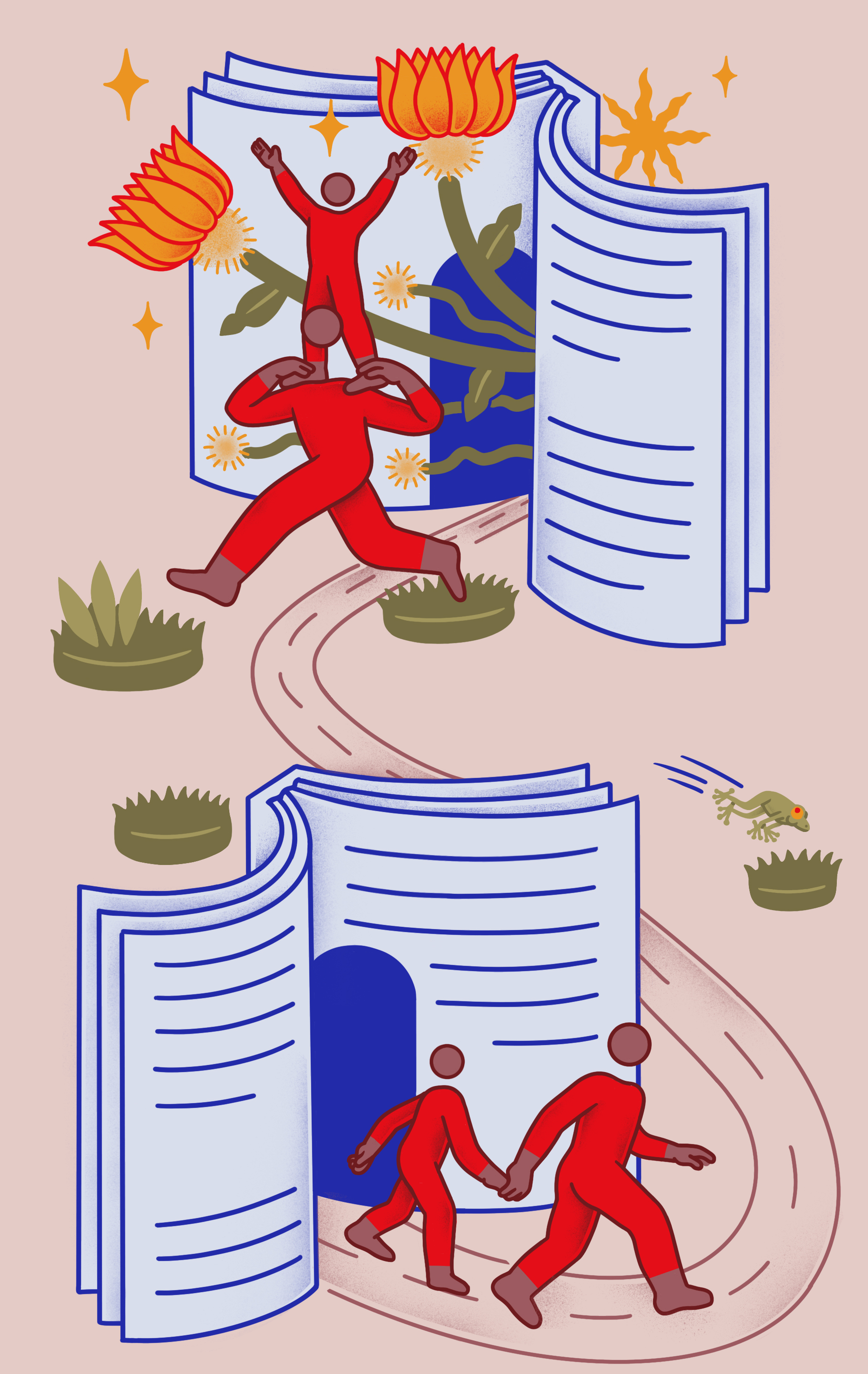

When our son started reading at school, we looked for books of his age. The French Sami et Julie font des crêpes (“Samik and Julie fabrican matahamis”), E. Massonaud and T. Bontéren's work. As soon as we read the title and know the back cover (“a short, ridiculous and very easy to read story”), the son gave us an offensive look: “And why not ‘Samik and Julie putting one foot in front of the other’? Nothing is worth it, you know it!” Unexpected awareness for the burasons we love literature! On the one hand, we condemned our child by proposing a book that had no interest, we denied with images a dignified inner appetite and a complex existence; on the other hand, we presented a book that was neither literary nehola, marvelously filling the shelves of the house.
Questioning our son, we understood that he dreamed of epic storytelling of adventures, telling him admirable friendships, making him experience outside home and village experiences, allowing him to identify with amazing people. Outside Sami and Julie, we headed for R. Dahl, J. London, R. L. Stevenson and A. To the works of Dumas, unlike French in Basque, thus saving the confidence that the son had in us until then.
That intervention showed me that it is useful to be rigorous with what appears in the department of “children and youth literature”. In fact, most of the production in this field undoubtedly has an educational objective: since its appearance it has a didactic and moralizing purpose. In the last three decades there have been major changes, obviously, both in the main languages and in our own, X. Etxaniz and M. López Gasena, among other things, as he has shown. Nowadays, there are many psychological, affective, social and political issues addressed in the literature of children and youth, as the occurrences are no more timid and happy, and the authors really follow their style.
Why force children and young people to read only light, nice and superficial books? Why don't you think they're like us, complicated?
However, many children's and youth books today aim to guide contemporary moral values: harassment, discrimination, condemnable exclusion, the promotion of a healthy and sound life ... Not so many overcome the game between good and evil, as people and society show themselves: jealousy, revenge, ghosts, boundless passion, romantic ideals, disobedience, disobedience, selfishness, hope, resignation, forgiveness, others, guerrillas, death, injustice and righteousness, are themes that do not fit into fiction, poetry or theater.
An amoral literature like this, which does not lead to judgment, S likes outside the politically correct canon. Expert Van Der Linden says in an online speech. Why force children and young people to read only light, nice and superficial books? Why don't you think they're like us, complex, clear and sensitive, sweeteners and irony, open to literary aesthetics?
Does Barthes, Qu’est-ce say that it criticizes it? (What is criticism?) in the text: “Literature does not allow walking, but it does take breath”: no, children’s and youth literature should not explain how to put one foot in front of the other or how to measure the prepared steps, but how to breathe to be liberated.